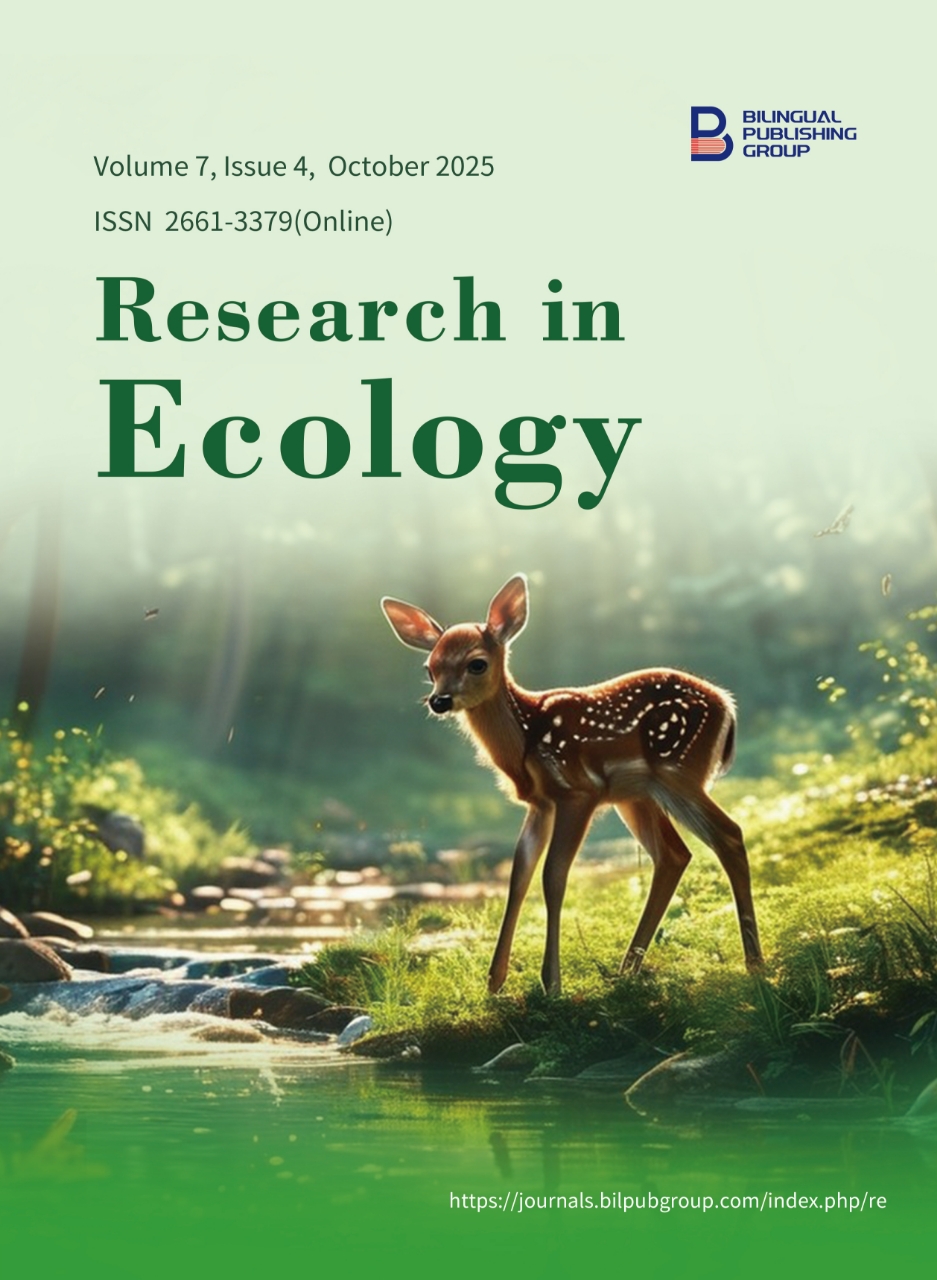
Life Forms of Some Representatives of r. Hedysarum Distributed in Central Asia
DOI:
https://doi.org/10.30564/re.v7i4.10055Abstract
The article examines the life forms of 14 species of the genus Hedysarum belonging to two sections (Obscura and Multicaulia) distributed in Central Asia, including the Central and Western Tien Shan (Talas, Fergana, and Alay ranges), Pamir-Alai and Kopet Dag. The morphological features of mature plants, branching types and a comparative analysis of the characteristics of the studied species—particularly those from the Obscura section (species H. flavescens and H. denticulatum)—were studied. Samples were collected from various types of habitats: grassy, rocky-shallow slopes, red clay outcrops, woody-shrubby thickets, archaea, spruce forests, subalpine meadows, and glacial belts. The life forms of the species were identified: H. severzovii and H. pumilum are classified as low-growing, sparsely branched shrubs with a bushy form; H. micropterum and H. wrightianum are classified as short-lived semi-shrubs, transitional from perennial herbaceous plants to short-lived shrubs; H. cephalotes is classified as a perennial turfgrass. The remaining species are perennial herbaceous plants with varying lifespans.
Keywords:
Hedysarum; Plant Morphology; Central Asia; Herbaceous Plants; Vital FormsReferences
[1] Karimov, B., Dursunbaeva, A., Babekov, A., et al., 2024. Analysis of the medicinal flora of the Kurshab River basin in Eastern Alay to preserve biodiversity. E3S Web of Conferences. 537, 05009. DOI: https://doi.org/10.1051/e3sconf/202453705009
[2] Karnaukhova, N.A., 2016. Anatomo-morphological features of the leaves of Hedysarum theinum (Fabaceae) in Western Altai. Contemporary Problems of Ecology. 9, 349–354. DOI: https://doi.org/10.1134/S1995425516030057
[3] Zhmud, E.V., Dorogina, O.V., Achimova, A.A., 2018. Morphological plasticity of Hedysarum austrosibiricum shoots under different ecological and geographical conditions. Contemporary Problems of Ecology. 11(2), 159–167. DOI: https://doi.org/10.1134/S1995425518020130
[4] Juramurodov, I., Makhmudjanov, D., Liu, P., et al., 2023. Phylogenetic relationships and biogeography in Hedysarum (Hedysareae, Fabaceae) with a focus on Central Asian taxa. Taxon. 72(6), 1262–1284. DOI: https://doi.org/10.1002/tax.13105
[5] Kusmangazinov, A., Kurmanbayeva, M., Sumbembayev, A., et al., 2023. Study of Hedysarum theinum (Fabaceae Lindl.) in the flora of Kazakhstan. International Journal of Biology and Chemistry. 16(2), 43–55. DOI: https://doi.org/10.26577/IJBCh2023v16i2a5
[6] Kusmangazinov, A., Kurmanbayeva, M.S., Zharkova, I., et al., 2023. Comparison of anatomical characteristics and phytochemical components between two species of Hedysarum (Fabaceae). OnLine Journal of Biological Sciences. 23(3), 323–335. DOI: https://doi.org/10.3844/ojbsci.2023.323.335
[7] Liu, P.L., Wen, J., Duan, L., et al., 2017. Hedysarum L. (Fabaceae: Hedysareae) is not monophyletic – Evidence from phylogenetic analyses based on five nuclear and five plastid sequences. PLoS One. 12(1), e0170596. DOI: https://doi.org/10.1371/journal.pone.0170596
[8] Nafisi, H., Kazempour-Osaloo, S., Mozaffarian, V., et al., 2019. Molecular phylogeny and divergence times of the genus Hedysarum (Fabaceae) with special reference to section Multicaulia in Southwest Asia. Plant Systematics and Evolution. 305, 1001–1017. DOI: https://doi.org/10.1007/s00606-019-01620-3
[9] Nafisi, H., Kazempour-Osaloo, S., Mozaffarian, V., et al., 2019. Hedysarum alamutense (Fabaceae-Hedysareae), a new species from Iran, and its phylogenetic position based on molecular data. Turkish Journal of Botany. 43(3), 11. DOI: https://doi.org/10.3906/bot-1806-50
[10] Liu, Y., Yang, H., Wang, W., et al., 2019. Chemotaxonomy studies on the genus Hedysarum. Biochemical Systematics and Ecology. 86, 103902. DOI: https://doi.org/10.1016/j.bse.2019.05.010
Downloads
How to Cite
Issue
Article Type
License
Copyright © 2025 Myrzaali Torobaevich Umetaliev, Zhazgul Suyunbaevna Abdyrakhmanova, Tazhimamat Kudaiberdievich Erkebaev, Dinara Arynbaevna Emilbekova, Aida Zhakypovna Dursunbaeva, Bibigul Mamatovna Orunbaeva, Ainura Manapovna Abzhaparova, Kenzhekan Saypidinovna Isakova

This is an open access article under the Creative Commons Attribution-NonCommercial 4.0 International (CC BY-NC 4.0) License.




 Myrzaali Torobaevich Umetaliev
Myrzaali Torobaevich Umetaliev






